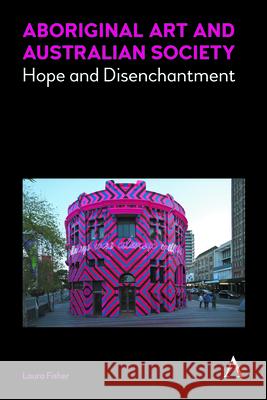Aboriginal Art and Australian Society: Hope and Disenchantment » książka
Aboriginal Art and Australian Society: Hope and Disenchantment
ISBN-13: 9781783085316 / Angielski / Twarda / 2016 / 312 str.
Aboriginal Art and Australian Society: Hope and Disenchantment
ISBN-13: 9781783085316 / Angielski / Twarda / 2016 / 312 str.
(netto: 342,30 VAT: 5%)
Najniższa cena z 30 dni: 355,74
ok. 30 dni roboczych.
Darmowa dostawa!
The Aboriginal art movement flourished during a period in which the Australian public were awakened to the implications of the state's decision to confront the legacies of colonisation and bring Aboriginal culture into the heart of national public life. Rather than seeing this radical political and social transformation as mere context for Aboriginal art's emergence, this study argues that Aboriginal art has in fact mediated Australian society's negotiation of the changing status of Aboriginal culture over the last century. This argument is illustrated through the analysis of Aboriginal art's volatility as both a high art movement and a phenomenon of visual and commercial culture. This analysis reveals the agendas to which Aboriginal art has been anchored at the nexus of the redemptive project of the settler state, Indigenous movements for rights and recognition, and the aspirations of progressive civil society. At its heart this study is concerned with the broader social and cultural insights that can be gleaned from conducting a sustained inquiry into Aboriginal art's contested meanings. To achieve this it focuses upon the hopeful and disenchanted faces of the Aboriginal art phenomenon: the ideals of cultural revitalisation and empowerment that have converged upon the art, and the countervailing narratives of exploitation, degradation and futility. Both aspects are traced through a range of settings in which the tensions surrounding Aboriginal art's aesthetic, political and significance have been negotiated. It is in this dialectic that the vexed ethical questions underlying Australia's settler state condition can most clearly be identified, and we can begin to navigate the paradoxes and impasses underlying the redemptive national project of the post-assimilation era.
This book is an investigation of the way the Aboriginal art phenomenon has been entangled with Australian society’s negotiation of Indigenous people’s status within the nation. Through critical reflection on Aboriginal art’s idiosyncrasies as a fine arts movement, its vexed relationship with money, and its mediation of the politics of identity and recognition, this study illuminates the mutability of Aboriginal art’s meanings in different settings. It reveals that this mutability is a consequence of the fact that a range of governmental, activist and civil society projects have appropriated the art’s vitality and metonymic power in national public culture, and that Aboriginal art is as much a phenomenon of visual and commercial culture as it is an art movement. Throughout these examinations, Fisher traces the utopian and dystopian currents of thought that have crystallised around the Aboriginal art movement and which manifest the ethical conundrums that underpin the settler state condition.











